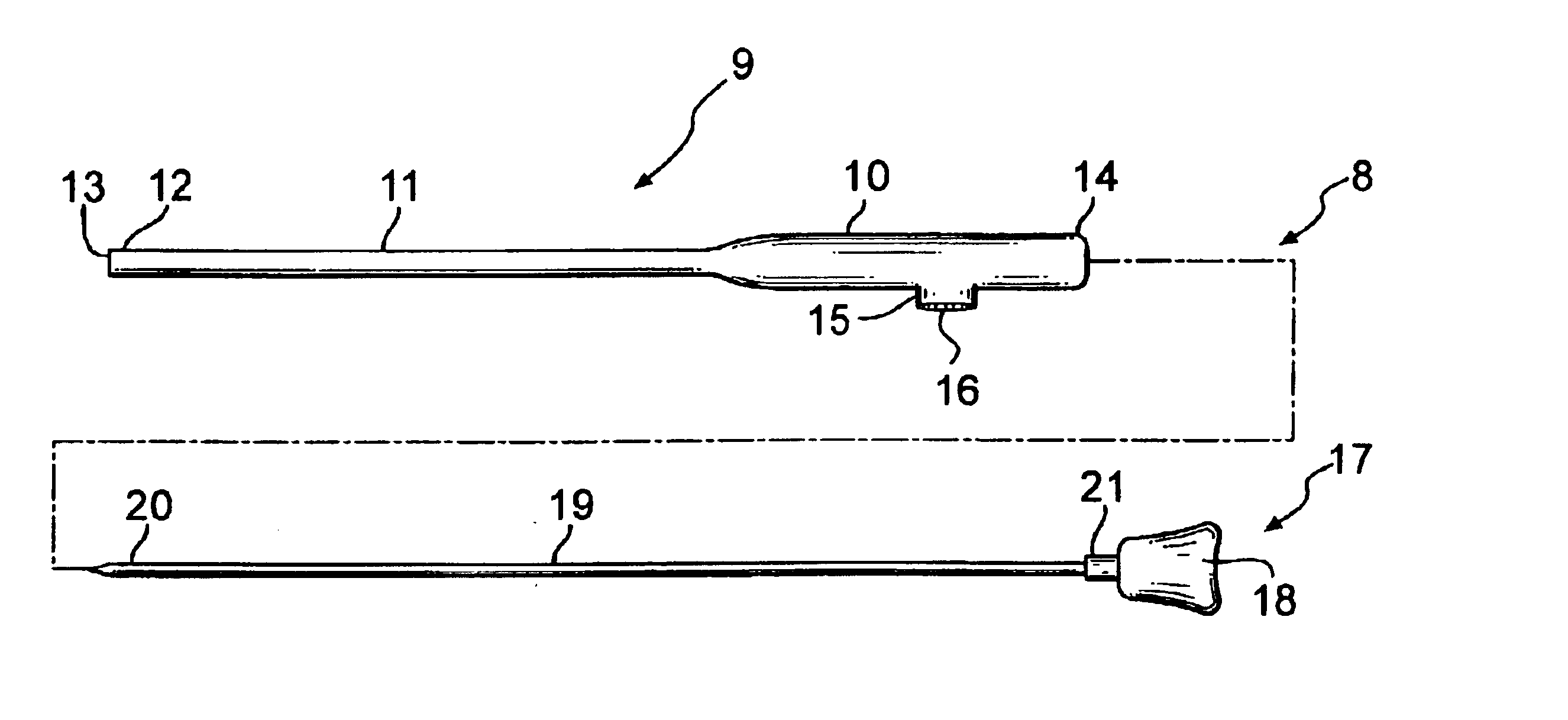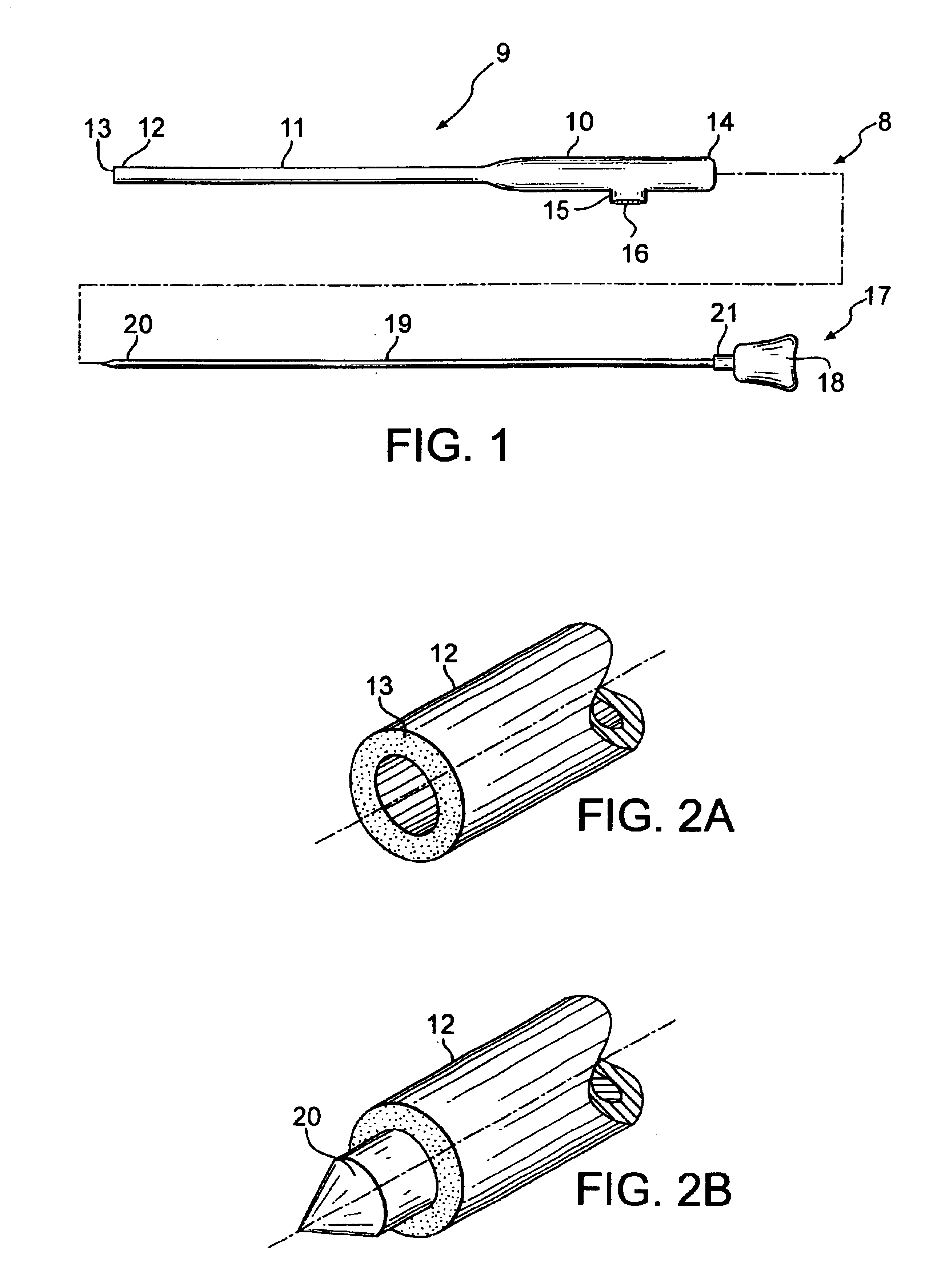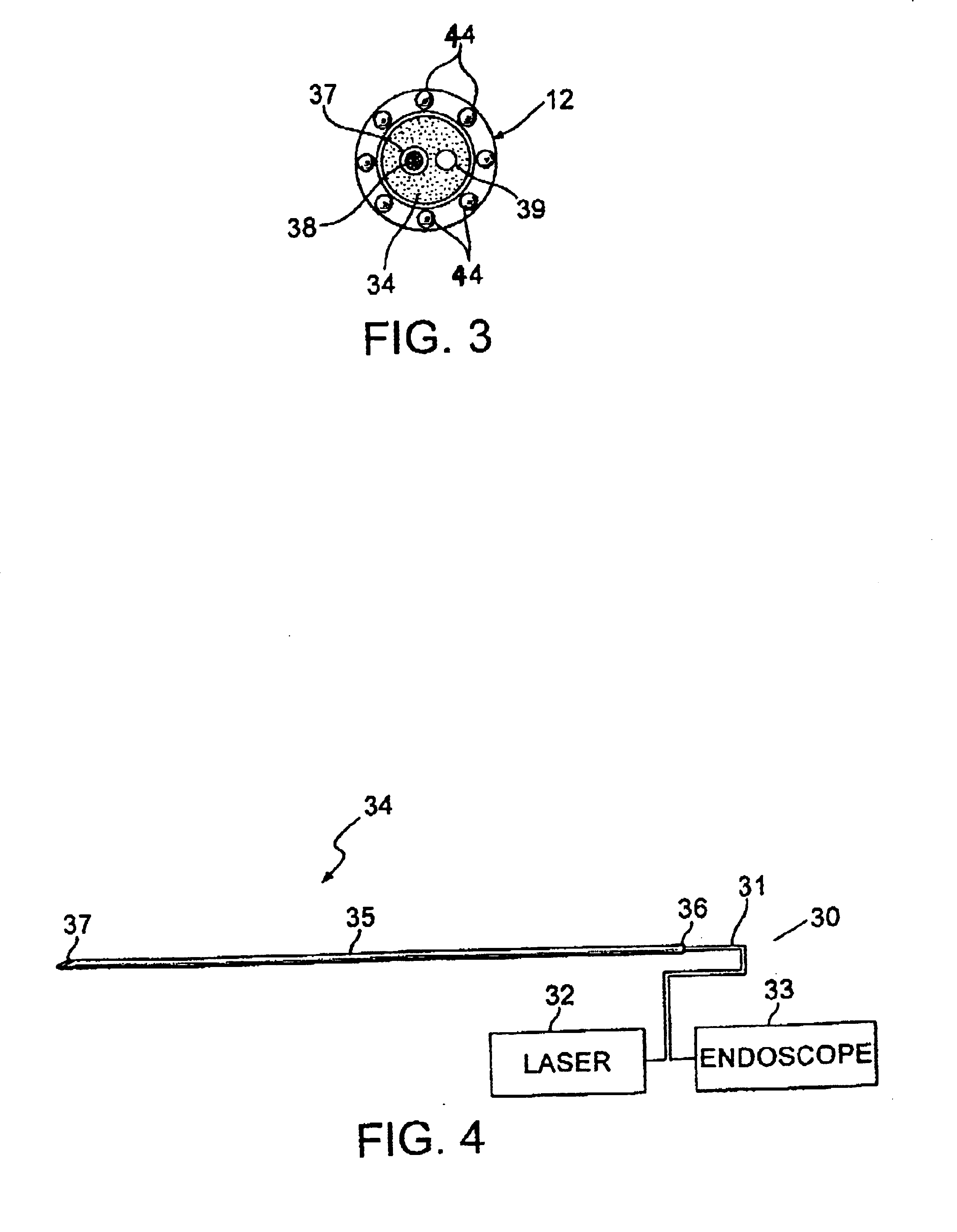Visualizing ablation device and procedure
- Summary
- Abstract
- Description
- Claims
- Application Information
AI Technical Summary
Benefits of technology
Problems solved by technology
Method used
Image
Examples
Embodiment Construction
[0022]The present invention is a medical apparatus and surgical procedure for the visualization and ablation of tissue in a subject's body. The apparatus can include a needle set, the needles set including an outer cannula, a trocar and a visualizing ablation probe. Whereas the cannula can be placed at a tissue site requiring treatment, the trocar can be included within the cannula and can be used to occlude the cannula during placement. Once the cannula has been positioned within the subject's body proximate to the target tissue, the visualizing ablation probe can be inserted into the cannula and used to observe and ablate the target tissue during treatment with a medical laser.
[0023]Referring initially to FIG. 1, several features of the needle set of the invention are shown, including an embodiment of the cannula 8 with a distal tip 12 having a tissue-gripping surface 13. FIG. 1 also depicts an embodiment of the trocar 17 with a pointed tip 20. In the illustrated embodiment of the...
PUM
 Login to View More
Login to View More Abstract
Description
Claims
Application Information
 Login to View More
Login to View More - R&D
- Intellectual Property
- Life Sciences
- Materials
- Tech Scout
- Unparalleled Data Quality
- Higher Quality Content
- 60% Fewer Hallucinations
Browse by: Latest US Patents, China's latest patents, Technical Efficacy Thesaurus, Application Domain, Technology Topic, Popular Technical Reports.
© 2025 PatSnap. All rights reserved.Legal|Privacy policy|Modern Slavery Act Transparency Statement|Sitemap|About US| Contact US: help@patsnap.com



